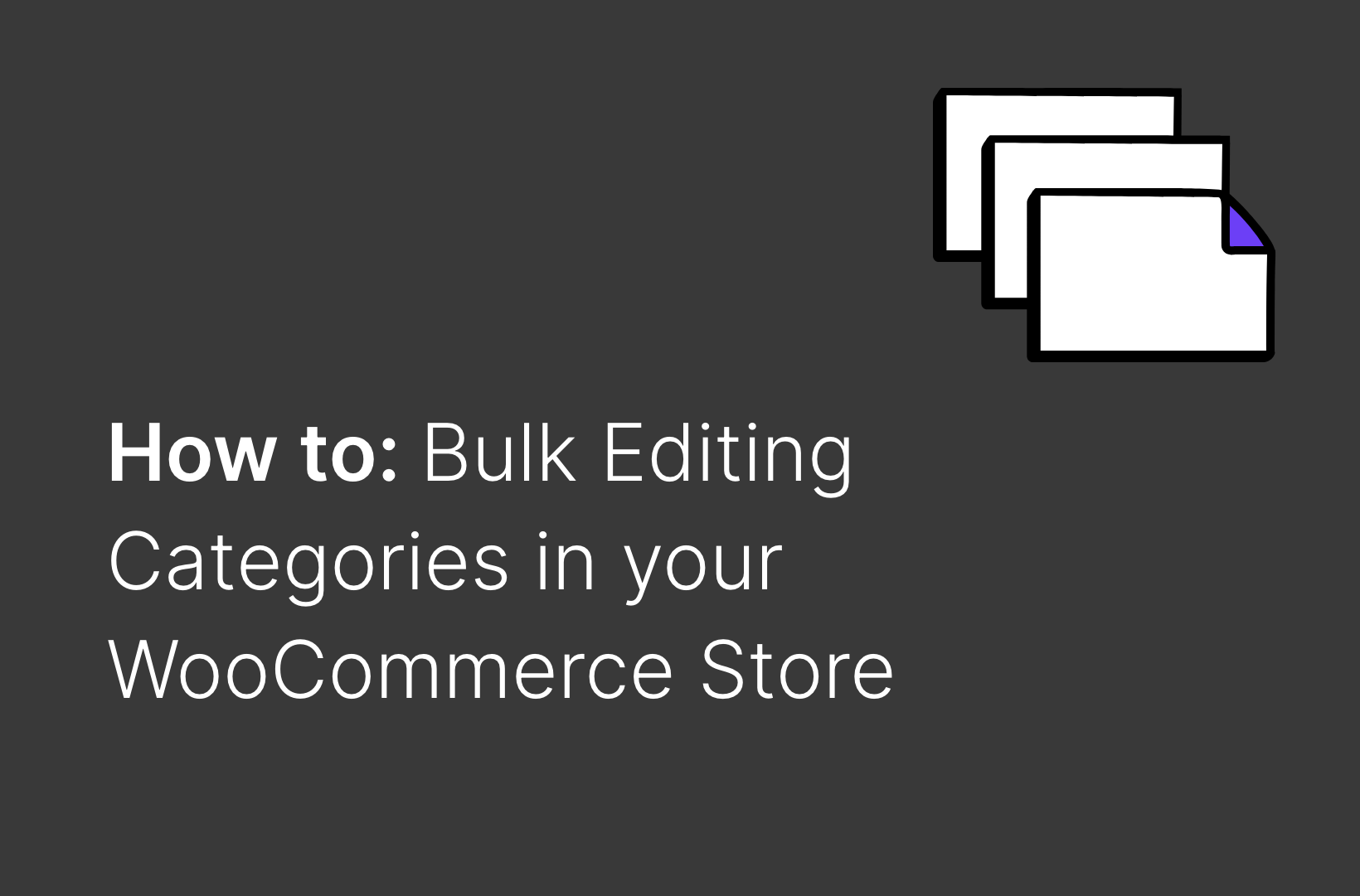WooCommerce vs BigCommerce vs Shopify vs Magento. Which is Right For Your Business?

If you already have an online store that’s exceeding the $1 million yearly revenue figure and you’re thinking about the future and which platform to go with, this article is for you! It will help you determine which eCommerce platform you should go with: WooCommerce, BigCommerce, Shopify, or Magento?
This piece is also for new stores ready to launch at scale and grow quickly.
Many eCommerce store founders start out with little knowledge about the platforms available today, or what will best suit their needs and budget. We’re going to equip you with everything you need to know to get started.
This article is a shorter version of our free full-length eBook titled: Which platform is best for launching or scaling your eCommerce store? Comparing WooCommerce, BigCommerce, Shopify, and Magento. This eBook is an essential read for eCommerce founders and managers who are ready to scale and want to learn more about the four main eCommerce platforms on the market.
Get your copy of the complete eBook with all the information you need to make a successful decision on which eCommerce platform to use.
If you already have a store and it’s facing these issues:
- Limited customization capabilities
- No support for your go-to-market strategies
- Limited Internal growth and product expansion
- Too many unforeseen costs
Then our eBook is an absolutely necessary read for you at this point in time!
You’ve probably already done your research, and/or you know for sure there are buyers out there wanting your product or service. The next step is making that final decision about the right eCommerce platform for your business.
Saucal has worked with hundreds of founders and eCommerce directors for more than a decade. In that time we’ve heard some fantastic testimonials about WooCommerce, just like this one: “Compared to Shopify, WooCommerce offers full flexibility to implement just about anything you can dream up!”
WooCommerce vs BigCommerce vs Shopify vs Magento
In our eBook we dig deep into the pros and cons of the top eCommerce platforms: WooCommerce, Shopify, BigCommerce, and Magento, so that this comparison piece speaks to you – a founder or eCommerce director. Keep in mind that this is a much shorter version of our new eBook of the same title, and you can get your free copy here!
We want to mention a couple of things. We are WooCommerce experts. In fact, Saucal is the team that WooCommerce turns to for WooCommerce solutions!
You might be wondering: “How objective will this article/eBook be?”. Hand on heart, we’re going to be completely transparent and give you an objective analysis of WooCommerce, Shopify, BigCommerce, and Magento. Pros and cons, costs, drawbacks, ease-of-use – everything. If you decide another platform is right for you, we’re cool with that.
Our new eBook is written with the eCommerce founder or manager in mind.
We’ve broken it down into sections to make the reading experience easy. Within each section looking at the big eCommerce platforms, we give a comprehensive list of pros and cons. The first section is about the difference between self-host and eCommerce platforms vs SaaS eCommerce platforms.
Understanding self-hosted eCommerce vs SaaS eCommerce platforms

It’s important to understand the difference between self-hosted eCommerce platforms and SaaS eCommerce platforms. With this knowledge you’re better able to gauge what you do and offer with your store, and prepare a pretty accurate budget. And knowing the difference between SaaS and self-hosted will also mean you’ll better appreciate the analysis in this article and the eBook.
Self-hosted eCommerce platforms
A self-hosted website is a website that you own, so you host it yourself on a hosting provider of your choice. With WooCommerce and Magento, you own the website and its software. To run it you need a host, so it’s called self-hosted.
Software-as-a-Service eCommerce platforms
Software-as-a-service is software that an owner lets customers use; the owner licenses out the software as a service. The downside of SaaS is that you don’t own the software, so you can only make limited changes – if any – to the software. You are subject to the software owner’s development parameters and policies. Merchants also have limited ability to add features to the software. Features added are for “all” customers and not just the merchant.
SaaS eCommerce platforms include BigCommerce and Shopify – and these are the two platforms we are exploring in this article, along with the self-hosted platforms WooCommerce and Magento.
The WooCommerce vs BigCommerce vs Shopify vs Magento Comparison eBook

WordPress and WooCommerce pros and cons
Next up in our eBook, we focus on WordPress. If you decide to go with WooCommerce as your online store platform, you’ll definitely need to understand WordPress, because WooCommerce is built on WordPress. In our eBook, this section includes:
- Understanding WordPress, the platform on which WooCommerce is built
- WordPress’ pros and cons
- What WooCommerce is (it’s a plugin!)
- WooCommerce pros and cons
- Why WooCommerce is scalable
WooCommerce Is Scalable
One of the enduring myths about WooCommerce is that it doesn’t scale. We tackle this myth in our eBook, noting that thousands of stores have scaled using WooCommerce.
Scalability is the ability to grow your eCommerce store smoothly and easily. A combination of marketing, software, and hardware influence scalability. If growing your store significantly from day one is a priority, we recommend you read our piece on WooCommerce scalability.
Magento Open Source and Magento Commerce pros and cons
Magento is an open-source eCommerce platform written in PHP. Originally developed by Varien Inc, Magento was bought by Adobe in 2018.
The Saucal eBook explains how Magento provides two editions: Magento Open Source, and Magento Commerce, available in an on-premises version or a cloud offering.
Magento is definitely not for those with no or limited experience. Whatever version of Magento you select, you’ll need to spend money on a developer to get Magento up and running.
The different Magento editions make it difficult to create a straightforward pros and cons list. To make it easy, we’ve created two lists of pros and cons – one for Magento Open Source and one for Magento Commerce.
We also explore what you can do with Magento Open Source, and then the additional features that are included with Magento Commerce – which grew from Magento Open Source. For both Magento Open Source and Magento Commerce, we present the pros and cons.
BigCommerce eCommerce platform pros and cons
BigCommerce is . . . well, big. The NASDAQ-listed eCommerce platform is a SaaS platform used by well-known brands, including Toyota, U.S. Skullcandy, and PayPal.
Unlike WooCommerce users, BigCommerce customers don’t own their eCommerce store. This eCommerce platform is closed-source, and everything, from features to hosting, are included in your monthly fee.
BigCommerce offers four plans: Standard, Plus, Pro, and Enterprise. There isn’t a huge variation in the features offered across all plans. The big difference between plans is an increase in customization ability as you upgrade, greater customer support, and less costly payment processes.
In one way, BigCommerce makes it easier than Shopify to select the right plan for your online store – their pricing page gives the online figures per year starting point for each plan.
However, the platform isn’t transparent about the maximum number of orders per plan, while the additional charges for higher online sales can only be found in the small print. For example, the Pro plan starts at $299.95/mo for less than $400k in online sales, +$150/mo for each additional $200k in online sales. Ecommerce Platforms reports that users who have gone over 3,000 orders per year are hit with additional fees. The website adds that some BigCommerce Pro users have complained about being pushed into the Enterprise plan and being charged additional fees.
This section concludes with BigCommerce pros and cons, making it easy for you to evaluate this SaaS platform.
Shopify eCommerce platform pros and cons
Shopify is a SaaS eCommerce platform for online stores and retail point-of-sale systems. It’s the largest publicly traded Canadian company by market capitalization, and experienced rapid growth in the last few years.
Like BigCommerce, Shopify customers don’t own their store. Shopify is closed-source, and everything, from features to hosting, are included in your monthly fee.
Shopify offers four plans: Shopify Basic, Shopify, Advanced Shopify, and Shopify Plus. There isn’t a huge variation in the features offered across all plans. The big difference between plans is with the transaction fees and the Shopify Shipping Discount percentage. The credit card rate percentage charges decrease slightly as you move up to a more expensive plan. If you are not using Shopify Payments, the transaction fees decrease when you move onto a higher tier.
Essentially, the more a user pays for their plan, the less they will pay for transactions.
It’s not obvious which Shopify plan is the right one for any eCommerce store owner. You’ll need to do a fair bit of research, and have accurate revenue figures on hand, or at least very close approximations, to be able to select the right plan.
As with BigCommerce, the question for anyone considering using Shopify isn’t “Which is the right plan for me?” but “Which is the most cost-effective plan for my business?”.
Most eCommerce founders and managers reading the eBook will likely be considering Advanced Shopify or Shopify Plus. So we focus on these two plans. We conclude with the pros and cons of Shopify.
The Winner – WooCommerce vs BigCommerce vs Shopify vs Magento?
WooCommerce
WooCommerce takes a very comfortable first place. Its outstanding features detailed in our eBook make WooCommerce extremely affordable and fully customizable, no matter the size or look of your store.
Built on WordPress, WooCommerce gives you a unified content and commerce platform that delivers the ease, flexibility, and freedom you need to scale the digital experiences that drive your growth. WooCommerce gets top marks for ease-of-use, scalability, user experience, SEO, and content marketing potential. The eBook gives you the full details behind why WooCommerce takes first place.
Saucal can help you with this decision, so contact us for a free consultation when you’re ready!
WooCommerce vs BigCommerce vs Shopify vs Magento comparison table
| Functionality Area | WooCommerce | Magento | Shopify | BigCommerce |
| Self-hosted or software-as-a-service (SaaS)? | Self-hosted. | Self-hosted. | SaaS. | SaaS. |
| Checkout customization | Fully customizable. | Fully customizable. | Customization of the checkout is not available until you upgrade to Shopify Plus. Even in this case, it is still not fully customizable. | Offers some customizability, but requires a massive amount of API calls to build a cart, which results in the store being slow. |
| Shipping | Possible to offer different shipping rates easily. | Possible to set different shipping rates based on destination or weight. There is also a plugin offering an unlimited number of flexible shipping methods. | The standard shipping options are quite limited, and require plugins (e.g. Shipstation or ShiperHQ) to achieve more functionality. | Limited shipping options that work on weight only. BigCommerce provides a paid app Shipper HQ with more functionalities. |
| Transactional Emails | Transactional emails are customizable, PDF invoices can be attached to the email automatically. | Transactional emails are customizable, PDF invoices can be attached. | Transactional emails are extremely limited. PDF invoices cannot be attached, but have to be sent by another third-party app called Sufio, which sends them in a separate email. | Transactional emails are extremely limited. PDF invoices cannot be attached, but have to be sent by another third-party app called Sufio, which sends a separate email. |
| Subscriptions | Good native subscription functionality and recurring payments functionality. | There are paid extensions providing subscriptions functionality. | Native subscription can only be provided via third-party apps like Bold Subscriptions and Recharge. Both are quite expensive and carry high transaction fees. | There is no native subscription functionality. Recurring billing and subscriptions are limited, and you’ll need to install third-party apps, some of which are poorly designed. |
| CSV Export | Exporting data is easy and unrestricted. | CSV export is possible. | CSV export system is excellent for orders, customers, products. | No default CSV export functionality, CSV export is only possible with a third-party app. |
| App ecosystems | Very large ecosystem of well-maintained and supported plugins – both paid and free. | More than 3000 extensions, which is much less than WooCommerce. | There are many good-quality Shopify apps, but they are expensive and don’t offer flexibility and customization. | Besides a few larger apps, there is a big number of very small, poorly supported apps. |
| Customization possibilities | Unlimited customization possibilities, thanks to the fact that it is self-hosted and you own your website’s code. | Customizable, with extensions, add-ons, and plenty of integration options. Some of Magento’s features mean it’s incredibly complex, making customization very difficult and time-consuming. | Full customization is not allowed. Customization ability depends on the plan you are using, e.g. checkout customization is possible only if you upgrade to Shopify Plus. | Customization ability will depend on the plan (Standard, Plus, Pro, and Enterprise)- the more expensive plan you are using, the more customization possibilities it offers. |
| Cost | Free with no volume-based fees. | Magento Open Source is free, but a build is expensive, and there are many additional costs. There is also Magento Commerce targeted at enterprises. It is expensive to set up and maintain. It also involves license costs based on revenue. E.g. if a store’s annual revenue is between $1 million and $5 million, Magento Commerce will cost around $32,000 yearly. | Pricing is volume-based. The cheapest Shopify Basic plan starts at $29 monthly, Shopify Advanced plan costs $299 monthly and Shopify Plus pricing is individual and available on demand. Additionally, Shopify charges a transaction fee of 2% if you’re not using Shopify Payments (which is available only in 17 countries). | BigCommerce is closed-source, and everything, from features to hosting, are included in your monthly fee. Pricing is volume-based and it becomes costly for large stores. Plans start at $29.95 a month (for online sales less than $50k per year), the Pro plan starts at $299.95/mo for less than $400k in online sales, +$150/mo for each additional $200k in online sales. |
| Integration with payment providers | No restrictions on payment providers integrations. There are a lot of payment gateways available and it’s possible to develop and add your own payment gateway if necessary. | Integrations with the most popular payment providers like PayPal, Amazon Pay or Stripe are available. It’s also possible to develop and add your own payment gateway. | Shopify recommends its own payment gateway Shopify Payments, but it is available only in 17 countries. It’s possible to use other payment gateways but it involves extra transaction fees. | Payment providers options are restrictive and limited – it’s possible to use only providers approved by BigCommerce. |

This blog post (and the eBook from which it originated) is a live document and is constantly being updated, because eCommerce platforms frequently change their permissions, rules, and offers. If you see something that is out-of-date, please let us know and we will check and update in our next version of the piece. Thanks!
 Book now, build later. Lock in 20% OFF projects over $10K when you book by Dec 31.
Book now, build later. Lock in 20% OFF projects over $10K when you book by Dec 31.  Start 2026 focused, stress-free, and ready to grow.
Start 2026 focused, stress-free, and ready to grow. 


